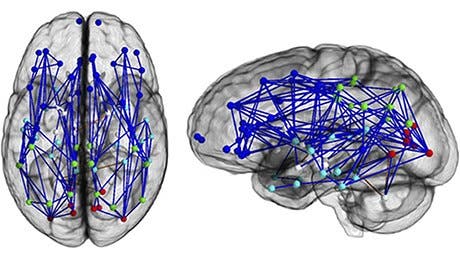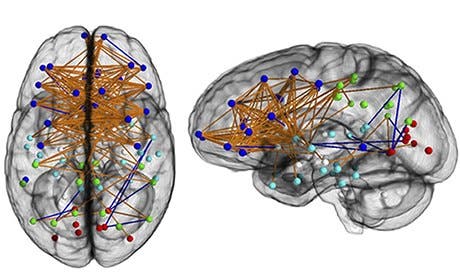
A new study which involved the analysis of over 1.000 brain scans confirmed what many intuitively believed for a long time: men and women’s brains are hard wired differently.
Maps of neural circuitry showed that on average women’s brains were highly connected across the left and right hemispheres, while men had better connections between the front and back areas of the brain. Surprisingly or not, these findings support the stereotypical ideas that men generally have improved perception and coordination, while women have better social skills.

Ragini Verma, a researcher at the University of Pennsylvania, explains:
“If you look at functional studies, the left of the brain is more for logical thinking, the right of the brain is for more intuitive thinking. So if there’s a task that involves doing both of those things, it would seem that women are hardwired to do those better,” Verma said. “Women are better at intuitive thinking. Women are better at remembering things. When you talk, women are more emotionally involved – they will listen more.”
She then adds:
“I was surprised that it matched a lot of the stereotypes that we think we have in our heads. If I wanted to go to a chef or a hairstylist, they are mainly men.”
This is the biggest study to date that documents the differences between the brains of men and women. In addition from showing the gender differences, this also gave researchers a better picture of what happens in the brain for each sex at various ages. They hope that this can provide a better understanding of what happens at a neural level to patients suffering from brain disorders such as schizophrenia and depression.
Verma’s team used a technique called diffusion tensor imaging. Diffusion-weighted imaging (DWI) is a well-established magnetic resonance imaging (MRI) method for diagnosing problems such as cerebral ischemia. It allows the mapping of the diffusion process of molecules, mainly water, in biological tissues, in vivo and non-invasively.
They looked at the brain scans of 428 males and 521 females aged eight to 22. The neural connections are basically a road system through which the brain carries out its traffic. The scans clearly showed significant differences, the most noticeable being greater connectivity between the left and right sides of the brain in women, while the connections in men were mostly confined to individual hemispheres. The only area of the brain where males had better inter-hemisphere connectivity is the cerebellum, which plays a vital role in motor control.
“If you want to learn how to ski, it’s the cerebellum that has to be strong,” Verma said.
The differences didn’t become noticeable by the age of 13, but clearly showed up on ages 14-17.
“It’s quite striking how complementary the brains of women and men really are,” Ruben Gur, a co-author on the study, said in a statement. “Detailed connectome maps of the brain will not only help us better understand the differences between how men and women think, but it will also give us more insight into the roots of neurological disorders, which are often sex-related.”
Journal Reference:
Madhura Ingalhalikar et al. Sex differences in the structural connectome of the human brain. PNAS December 2, 2013, doi:10.1073/pnas.1316909110



